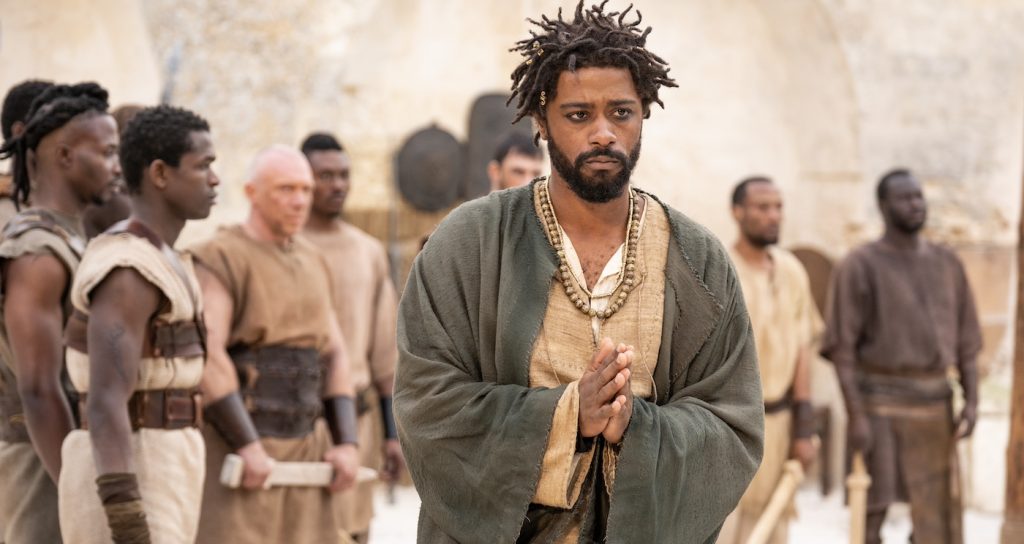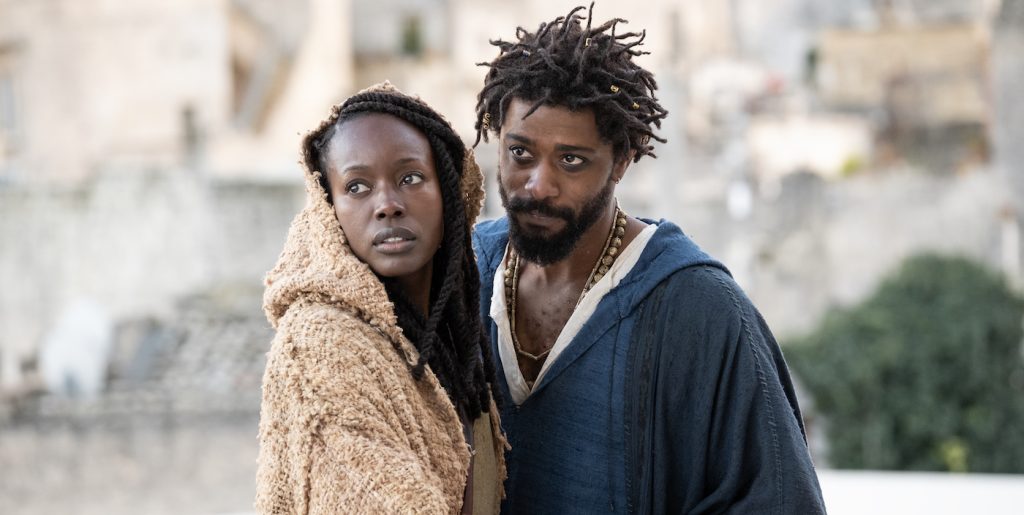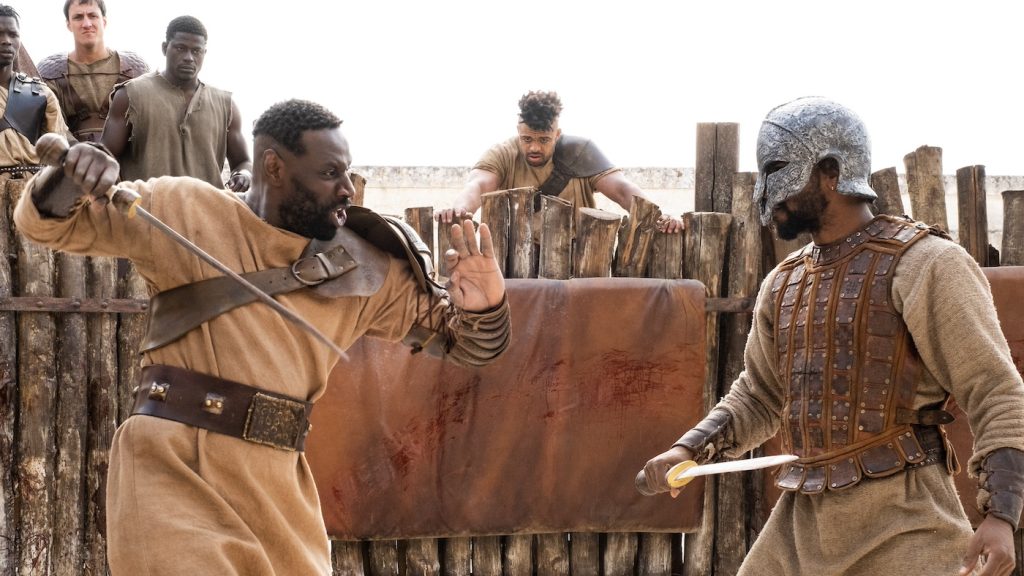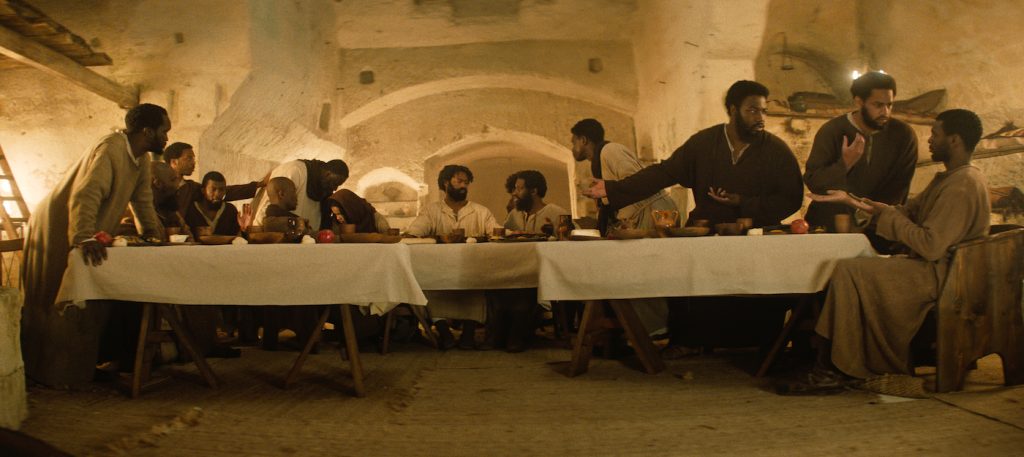“The Book of Clarence” Director Jeymes Samuel Brings Humanity to the Biblical Epic
Hollywood has long recognized the cinematic appeal of Bible stories as both ancient and eternal. Battles between good and evil play out on an epic scale, but The Book of Clarence looks beyond the page to spotlight everyday citizens whose lives were upended by Jesus’ journey. The film’s writer and director, Jeymes Samuel, aimed to widen the lens of the gospels and give some perspective to those just outside Christ’s circle.
“I wanted to make one of those movies that looked like the environment I come from and the environment we all see every day and tell one of those stories that are solely societal and environmental but transpose it to the Biblical era to show how in alignment those two are,” Samuel told us. “Nothing has really changed from those days to now and show how really alike everything is.”
Biblical text often gives quick glimpses and overviews of its characters, but Samuel endeavored to flesh out the players. Clarence (LaKeith Stanfield) experiences the religious and political unrest surrounding Jesus and his disciples with a skeptical eye. While major historical events unfold around him, Clarence is focused on his own needs and ambitions.

“It’s the minutiae of storytelling. That is the gripping factor to me,” Samuel explained. “Where would people [of that era] buy their clothes? Where would Mary Magdalene (Teyana Taylor) get her hair done? Where would Jesus (Nicholas Pinnock) buy his sandals? Who was the town cobbler? I want to know that story. I want to know the story of the person who just lives around the corner and sees all this drama taking place and thinks, ‘I just don’t believe it.’ And goes upon his own journey of self-discovery and, ultimately, redemption.”

Samuel pays homage to the golden age of Biblical epics in cinema while modernizing the genre. Retro fonts and stylized transitions feature alongside the latest special effects. Although filmmaking continues to advance, The Book of Clarence pulls at timeless threads.
“Just growing up in the urban environments in the hood that I grew up in, I knew so many Clarences,” Samuel recalled. “Witty, intelligent individuals that have a desire to make a mark. Couple that with him being in the age of Christ hearing all of these stories firsthand, as thousands of people did in Jesus’ day, and thousands of people that didn’t believe in him. Clarence falls on the side of him being a nonbeliever and then exploring his relationship with his brother and his brother being one of the apostles.”

Stanfield pulls double duty as Clarence’s twin, the apostle Thomas, who is destined to have his own doubts about the resurrection of Christ. Their familial discord is as relatable as any contemporary dispute.
“When you read about these things, especially historical, you always see similarities between then and now,” Samuel said. “We go forward as human beings seemingly never learning a lesson. We just make the same mistakes. In twenty years, they’ll be making the same mistakes they did 2000 years ago. So, I just think you have to remain truthful and remain fearless in your storytelling desires. And obey your crazy.”
“Obey your crazy” is Samuel’s killer catchphrase for the bold pursuit of the ambitious ideas he packed into the film. His talented team helped him develop even the wildest concepts employing action, drama, fantasy, and even comedy.
“While there’s humor in the film, I keep the humor as neighborhood humor,” Samuel clarified. “The humor we have and the laughs we have growing up in the hood. When they get stopped by the Romans, there’s been a robbery in the area. Okay, show us a picture of the assailant. Police always stop us in the hood. There’s been a robbery in the area, and you fit the description. Really? I’m not saying there hasn’t been a robbery, but that robbery took place in 1957. You’re still looking for that criminal all over the world? It’s that kind of stuff I poke fun at, but in jest, we find a lot of truth.”
Through the film’s innovative storytelling methods, Samuel set out to solve an age-old problem. The most enduring depiction of the fateful gathering of the Last Supper is the long banquet table painted by Leonardo da Vinci. Yet the practicality of those seating assignments doesn’t work. Samuel wanted to honor this iconic image while finding a workable arrangement. With some fantastic cinematography and choreography, the pieces eventually fit seamlessly.
“My team and I found a way to shoot that Last Supper in the most classic way,” Samuel said. “You have those three tables. They’re just around the room. I visit the apostle’s house many times and you do not look at those tables until Jesus said, ‘One of you is a snitch. The one who dips his bread in the gravy,’ which is what happened. Then I show the aerial shot and ‘bang.’ Three tables, and then I bring the camera down slowly, and the three tables through perspective turn into one and then—freeze. Everyone is in their position of Leonardo da Vinci’s painting.”

A film’s soundscape is just as important to Samuel as the visuals. The Book of Clarence features new music by JAY-Z, Lil Wayne, Kid Cudi, and Samuel himself. Composers often join projects in post-production, but Samuel believes the sooner they can join in, the better.
“I think music and storytelling don’t even go hand in hand. I think they’re the same thing. A song, a script, is exactly the same thing,” Samuel explained. “As I’m writing the script, I’m literally composing the score. As I’m composing the score, the songs are manifesting. It’s all one continuous thing. They are literally the same thing. There are no separate sides of the brain. There’s no left and right. It doesn’t feel like using your right brain and then using your left brain. You are constantly composing. There’s no sentence you’re going to hear that’s not in a particular key. There’s no word that’s not in a particular tone.”
Samuel clearly values all elements of filmmaking and honors his entire team’s contributions. He offered this encouragement to creatives at every level. “You find ways just to be true to the story you’re telling if you’re a cameraman, if you’re a sound recorder, if you’re a painter, if you’re a songwriter. We are all, every single one of us storytellers, so you have to really obey your crazy and listen to all the things that are inside yourself.”
Even if your creative endeavors only extend as far as being an appreciative audience member, Samuel still has an assignment for you – spot his next project.
“In The Harder They Fall, I put Easter Eggs in there for The Book of Clarence,” he revealed. “Jim Beckwourth (RJ Cyler) on the horse talking about The Book of Clarence. ‘Out-speed ain’t a word, and Clarence ain’t a book.’ But this movie is lathered with Easter Eggs for where I’m going next. So, to anyone watching this, I challenge you to find them. Let’s go on an Easter Egg hunt.”
The Book of Clarence is in theaters now.
For more upcoming films from Sony Pictures, check out these stories:
“Napoleon” Costume Designers Janty Yates & David Crossman on Designing for Coronations and Conquests
Amazon’s “Spider-Man Noir” Series Taps “The Punisher” Showrunner Steve Lightfoot
Featured image: LaKeith Stanfield and Director Jeymes Samuel on the set of THE BOOK OF CLARENCE.



